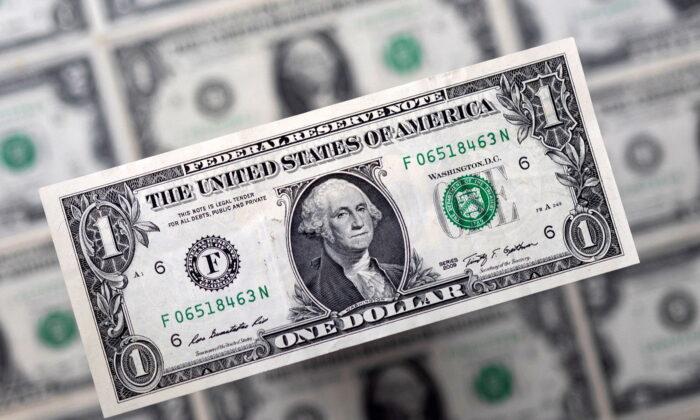LONDON/NEW YORK—The cost of raising U.S. dollar funds in the euro swaps market rose sharply on Monday after Western nations ramped up sanctions against Russia over the weekend, including blocking some Russian banks from the SWIFT international payments system.
Three-month euro cross-currency swaps hit 38.25 basis points, the highest since mid-March 2020, the beginning of the coronavirus pandemic, as foreign banks and companies scrambled for dollar funding.
In other words, investors were willing to pay around 38.25 basis points over interbank rates to swap three-month euros into dollars.
Last Friday, that three-month cost was 21 basis points and it was 8 basis points a month ago.
Cross currency swaps allow investors to raise financing in a particular currency from other funding markets. For example, an institution with dollar funding needs can raise euros in euro funding markets and convert the proceeds into dollar funding obligations via an FX swap.
“There are many question marks around the financial stability impact of sanctions, but it seems likely that they will temporarily make dollar funding more expensive for foreign banks,” said Antoine Bouvet, a senior rates strategist at ING.
The ruble plunged nearly 30 percent to an all-time low versus the dollar on Monday, after Western nations on Saturday unveiled tougher sanctions including blocking some Russian banks from the SWIFT international payments system.
Analysts said the move by the United States and its allies to block Russia from using $630 billion in central bank foreign currency reserves over the weekend will make dollar funding costs expensive for Western companies who were getting paid by Russian counterparties.
“For Western companies, it means central banks may have to provide dollar and euro liquidity,” said Kenneth Broux, an FX strategist at Societe Generale in London.
According to estimates by Credit Suisse’s Zoltan Pozsar, Russia holds about $300 billion in short-term money market instruments: $200 billion in FX swaps and another $100 billion through public and private deposits.
The stress was not limited to euro funding markets. Borrowing costs in pounds and yen also rose to their highest since March 2020.
The jump in borrowing costs hurt trading volumes. A trading desk at a large U.S. bank said that overnight Treasury volumes were lower than recent averages.
Trading in euro zone government bonds slowed sharply on Thursday following Russia’s invasion of Ukraine, data from MarketAxess showed on Friday.
Concerns about the Russia-Ukraine war have filtered to U.S. funding markets.
The spread between the U.S three-month forward rate agreement and the three-month overnight index swap rate, a funding stress indicator, rose to 19.14 basis points late Monday, its widest since early July 2020.
On an intraday basis, the gap was 23.75 basis points hit early morning in New York, the highest since May 2020. The higher spread reflects rising interbank lending risk or dollar hoarding.
Barclays, in a research note, said that should funding stress worsen, the Fed has several mechanisms in place that could provide relief for short-term funding markets such as FX swap lines. The Fed maintains standing FX swap lines with a number of central banks, including the Bank of Japan, European Central Bank, Bank of England, Bank of Canada, and the Swiss National Bank.





